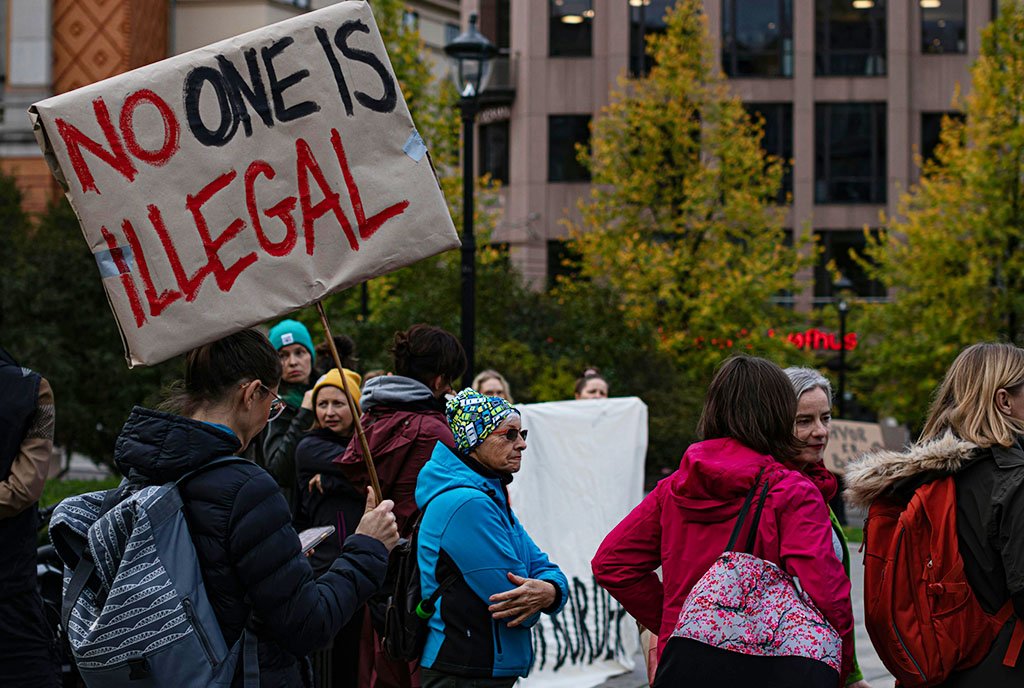
When one thinks of unions within the media industry, film and television actors and reporters likely come to mind. These sectors have been highly unionized for decades, mainly through SAG-AFTRA, NewsGuild-CWA (Communication Workers of America), the International Alliance of Theatrical Stage Employees, and the Writers Guild of America. Even newer iterations of these fields—like digital journalism—have had recent organizing gains.
But many other media and communication workers remain largely nonunion—particularly in advertising, marketing, public relations, and social media management. Within such sectors, one finds creative directors, social media strategists, public relations experts, production coordinators, graphic designers, copywriters and editors, photographers, videographers, spokespeople, brand marketers, and social media editors.
Could these workers be on the brink of joining unions in large numbers? And, if so, what is driving this shift?
A New Type of Media Worker Union
When people think of creative workers, the role of marketing, advertising, and public relations workers is often discounted. “But they are strategic workers, right?” observes Maria Figueroa, the dean of the Harry Van Arsdale School of Labor Studies at Empire State University. “They are very influential,” she says. “They are really the ones that manufacture the narrative out there.”
To date, such workers have primarily participated in professional trade associations, like the American Marketing Association or the Professional Photographers of America. Trade associations are mainly used by individuals and businesses to come together in creative collaboration—mainly through workshops, conferences, and other networking events—while unions focus on bettering workplace conditions and improving employment benefits.
Outside the United States, advertising, public relations, design, social media, and production professionals in Great Britain formed the Creative Communications Workers in 2020. CCW organizers say their union was formed to address pay transparency; working conditions; and diversity, equity, and inclusion.
In Canada, Point Blank Canada, an advertising agency with an estimated 50 full-time employees, followed suit. According to the publication Campaign, their first collective bargaining agreement in 2023 brought “guaranteed wage increases, paid family responsibility leave, and paid bereavement leave.”
Advertising, public relations, and marketing jobs…can be stressful. Industry reports show growing signs of job dissatisfaction.
Workers have also taken initial steps in the United States. In 2020, 75 employees—including campaign strategists, analysts, and designers—working at the creative agency Blue State won union recognition. Workers at another political communications firm, Middle Seat Consulting, joined the Campaign Workers Guild, an independent national union, in 2018.
Another firm, M+R Strategic Services, which workers founded in 2021 and seeks to bring together digital strategists and a range of other media workers is affiliated with the News Guild/CWA. The union lists fighting burnout and securing better wages as some of its top priorities. Other firms where workers have voted to join unions include D+GG Advertising, BerlinRosen, and Precision Strategies.
Internet forums show growing signs of worker interest in unions, made evident by the various posts on the Reddit thread r/advertising: “Why haven’t we unionized?”, “How would you feel about joining an advert[is]ing union?” and “Are there unions at any ad agencies in NYC?” X users express their work frustrations as well, writing that “social media managers need to unionize.”
A former National Basketball Association social media worker aired their grievances on the organization’s official Facebook page: “The NBA overextends their social media employees greatly to the detriment of their health and social lives for a salary of less than $50k annually after taxes. I worked 14-hour shifts without breaks at times.”
A Union Cure for Burnout
Advertising, public relations, and marketing jobs may not be physical, but they can be stressful. Industry reports show growing signs of job dissatisfaction. Hootsuite, a social media company, surveyed over 3,800 social media marketers in 2023. Nearly a quarter said they planned to leave the field in the next year. A 2022 survey of 768 public relations professionals found that a third of practitioners said they were likely to search for a new job in the following six months.
Why haven’t more media workers joined unions already? Part of the organizing challenge is that workers are only rarely connected to each other.This comes as unions are seeing more overall support. A 2023 Gallup poll showed that 67 percent of Americans approve of unions. Organizing approval in the United States has been on the rise since 2009. Union election filings were up 187 percent year-over-year in 2023. Still, at 10 percent, union membership remains at historically low levels.
Katie Barrows, communications director of the Department for Professional Employees, part of the American Federation of Labor and Congress of Industrial Organizations (AFL-CIO), regularly surveys nonunion professionals about their attitudes toward unions. She notes that they were hearing “anecdotally from folks who have reached out about problems in the industry, particularly around hours and workload and burnout.”
Between 2022 and 2023, DPE conducted an admittedly unscientific survey of 142 nonunion PR and advertising professionals. But of those surveyed, 56 percent of respondents said they consider their workload unmanageable, according to Barrows. Barrows notes that the top desired workplace improvements were related to pay and work-life balance. A related concern, she added, for industry workers is the ability to “turn off” and “unplug” from their jobs.
Coming Together for Collective Good
Why haven’t more media workers joined unions already? Part of the organizing challenge is that workers are only rarely connected to each other. “The workforce is so atomized, and workers are isolated from one another and that makes it much harder to engage in collective efforts,” Figueroa says.
Sign up for our free newsletters
Subscribe to NPQ's newsletters to have our top stories delivered directly to your inbox.
By signing up, you agree to our privacy policy and terms of use, and to receive messages from NPQ and our partners.
While many workers are employed by agencies, some may be among the only employees at their company doing this type of work. “In some cases, it may be one person that does the digital communications for a department that involves people that do all other sorts of work,” observes Todd Vachon, the director of the Labor Education Action Research Network at Rutgers University. It can be difficult for these workers to figure out who their organizing peers would be—especially at a time when a lot of this work is done remotely.
Workers could gain much-needed economic stability through a type of communications projects hiring hall that had set pay rates and benefits.
Another challenge is culture. Historically, unions were typically formed around blue-collar trades. “It was really not until the 1960s and 70s,” notes Vachon, that white-collar workers began to organize in unions in significant numbers.
Vachon thinks that an old-fashioned kind of trade union might be best able to meet these advertising and marketing workers’ workplace needs, observing that for the past century, many trades, such as construction workers, have used a “hiring hall” approach. As Vachon explains, in a hiring hall system, “workers join the hiring hall for the trade that they’re skilled in.” When a construction company needs to hire skilled tradespeople—plumbers, carpenters, electricians, and so on—“they reach out to each of those union halls and they say, ‘I need 50 carpenters from the carpenters’ union.’” Then the union hall connects workers to projects. Vachon thinks this type of unionization might be something advertisers and marketers should consider.
“There’s so much churning and moving about from employer to employer—that’s one of the big causes of stress. It’s hard to know what your economic future is if you don’t know who your employer is going to be next year,” says Vachon. Workers could gain much-needed economic stability through a type of communications projects hiring hall that had set pay rates and benefits.
You Are the Union
It’s important to note that unionization doesn’t just appear out of nowhere, even if it may sometimes seem like that. “It’s not that the union is some outside entity that you call and then it takes care of all of your problems,” Vachon says. “It requires you and your coworkers deciding that you together want to solve your problems.”
That’s something Michelle, a content marketing specialist whose last name is being left out of the story to preserve anonymity, has been thinking about. She’s been working in the marketing department at a financial services company for over a year. Her duties include creating content to push on social media and writing articles for the company’s blog. A few weeks into her employment, she started noticing problems.
“A lot of it is just ridiculous rules coming from the department head,” Michelle says. Her department deals with micromanagement from that manager, who Michelle says is punitive and inflexible about work schedules. Michelle adds that this manager, who is also her boss, “doesn’t let you be like five minutes late to work or else you’ll get in trouble for it.” When it comes to finishing projects, her manager “doesn’t care how long it takes. You could be there for two hours, you’re expected to stay,” she adds. “She doesn’t let you clock out early the next day if you do that.”
There are also frustrations around required in-person work around the holidays, as well as a strict dress code. “There are some departments that are allowed to wear jeans and sweatshirts every day and then we’re held to a much higher standard than everyone else,” Michelle says. “We have to show up wearing like slacks and button-up shirts every day.”
Working hard does not always come with reward. Michelle’s one-year assessment served as a wake-up call. “I had like a really great performance review and [higher-ups were] basically were like, ‘Oh, sorry, it’s not in the budget to give you a raise or a promotion,’” she says. “Then they started dumping more work on me.”
She did get a cost-of-living adjustment, but Michelle learned that others at the company got much higher raises. At that point, she decided she needed to either get a new job or make a change in her workplace. “My team member and I got together and we’re both sort of over it. We kind of were just like, ‘The working conditions here are terrible and we need to do something about it.’”
Michelle and her colleagues haven’t talked to any union representatives yet, but early actions like this show change could be brewing in the industry.
Could Change Be Coming?
Barrows hopes that as knowledge of the gains digital media workers have won spreads, that information will likely lead to more worker interest in joining unions. Union members of The Onion, a satirical media outlet, just ratified a contract that raises the starting salary minimum from $50,000 to $60,000. Twenty-five percent of the team was previously making less than $60,000. “There’s been a number of other digital media companies that have gotten strong contract language around benefits and time off,” Barrows observes.
Unions can also negotiate layoff protections. “While oftentimes you can’t prevent layoffs or downsizing, you can get the most notice possible and you can get strong severance so that you’re able to land on your feet,” Barrows says.
As workplaces adopt more artificial intelligence tools, employees across all sectors are wondering if their positions could be erased. Figueroa contends that artificial intelligence “is just one more expression of technological change” and points out that unions have been effective at negotiating contract protections for workers threatened by technological change before.
Figueroa predicts AI will drive advertising, marketing, and public relations workers to think seriously about organizing: “I would say [unionizing is] probably the only way they can safely deal with this new challenge.”












